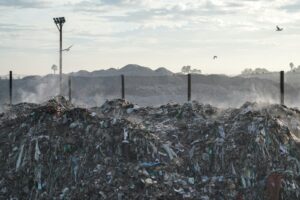Have yourself a very merry green Christmas
Christmas after Christmas, I would wander the campus of my university, grumbling, I was a sustainability scrooge, bah humbugging as I saw the overflowing waste bins and the lights burning in empty buildings.
When I complained about it, my ever patient wife would say it’s only once a year, which was true enough, but still I found myself wondering what it was about this season. Why had people forgotten all the lessons they’d learned about sustainability?
The only answer I could come up with is that they didn’t know how to have a ‘green’ Christmas. So that got me thinking. How can an organisation integrate sustainability into their end of year celebrations? How can they have a merry Christmas that’s merry for the planet as well?
Let’s start with the Christmas party. Not only can this be staged sustainably, it can also be a template for any event held during the year by focussing on the key elements of food, venue and waste management.
The menu should emphasise sustainability by using food that has minimal environmental impact (low food miles) and has been ethically sourced. Where practical, local product should be used, not only because it’s more likely to meet these criteria, but also invests in the broader community.
The energy used in the venue should be minimised by not over heating the space (or if you are in the southern hemisphere where seasons are flipped, not over cooling).
Encourage people to dress for the conditions – a jumper or a t-shirt have significantly less environmental impact than large air-conditioning plant. Ideally, if the weather permits, hold it outside – letting nature provide the room and reminding everyone why acting sustainably is important.
Greening your festive celebrations
Finally and most importantly, minimise waste. Do not over-cater. For example, have people select their meals rather than offer a bottomless buffet and structure the serving of the food, so that anything that is left over is suitable to be donated to community groups. Recycle wherever possible by making arrangement for food scraps to be composted and for large events, where crockery is not practical, use disposable dining implements that are biodegradable.
A great guide for this type of function is the ‘green event’ certification process established by Yale University. This provides various levels of certification (bronze, silver and gold) which are flexible enough to recruit the most resistant members of a community.
Another seasonal sustainability strategy would be to encourage people to leave the car at home, if only for a week or two, by giving them the gift of public transport. Some companies have already negotiated with municipal transport providers to establish travel passes that can be used by staff, usually for work related activities.
Why not extend that to this season of goodwill and reap both the benefit of a short-term reduction in travel emissions and possibility of converting some commuters to more sustainable travel all year long? And if you think about it, what better way could there be to celebrate the holidays after downing a few eggnogs, than to sit with your colleagues singing Christmas songs to the rock, rattle and roll of a train carriage speeding along the tracks?
And one last idea before your mind is overwhelmed by end of year financial deadlines and children’s requests for the latest and greatest. Build a team of Christmas auditors.
Every year, organisations close for the holidays with their empty buildings consuming power that is not needed. When I first started working, long before building management systems replaced people, we ran ‘last person out’ rosters. Every night the ‘rostered someone’ would check to make sure everything had been turned off before they left. While the BMS may address the building systems today, it does little to reduce plug load. So going back to those analogue days, a company could recruit a team of volunteers to do a last check around before closing the doors for the break.
These auditors would make sure that desktops are turned off, as well as any non-essential equipment left in standby (after all who really needs a printer to be ready on Christmas day.)
Kitchens and bathroom could be checked for dripping taps, while refrigerators could be cleared of food and drink, then turned off and left open until new year. The plugs could be pulled out of the wall sockets for private heaters secreted under desks and other personal use items in offices, like digital clocks and phone chargers. Though each of these consumes only small amounts of energy or water, the cumulative effect of these simple actions significantly improves the environmental footprint of the building with the added bonus of saving a few dollars.
I am sure there a more things that can be done, so as another Christmas approaches, why not sit down with a few friends and come up with ways to make it a sustainable season.
Photo by taylor.a 















